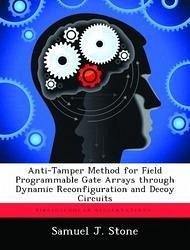As Field Programmable Gate Arrays (FPGAs) become more widely used, security concerns have been raised regarding FPGA use for cryptographic, sensitive, or proprietary data. Storing or implementing proprietary code and designs on FPGAs could result in compromise of sensitive information if the FPGA device was physically relinquished or remotely accessible to adversaries seeking to obtain the information. Although multiple defensive measures have been implemented (and overcome), the possibility exists to create a secure design through the implementation of polymorphic Dynamically Reconfigurable FPGA (DRFPGA) circuits. Using polymorphic DRFPGAs removes the static attributes from their design; thus, substantially increasing the difficulty of successful adversarial reverse-engineering attacks. A variety of dynamically reconfigurable methodologies exist for implementations that challenge designers in the reconfigurable technology field. A Hardware Description Language (HDL) DRFPGA model is presented for use in security applications. The Very High Speed Integrated Circuit HDL(VHSIC)language was chosen to take advantage of its capabilities, which are well suited to the current research. Additionally, algorithms that explicitly support granular autonomous reconfiguration have been developed and implemented on the DRFPGA as a means of protecting its designs. Documented testing validated the reconfiguration results, compared original FPGA and DRFPGA, security, power usage, and area estimates.
Bitte wählen Sie Ihr Anliegen aus.
Rechnungen
Retourenschein anfordern
Bestellstatus
Storno









